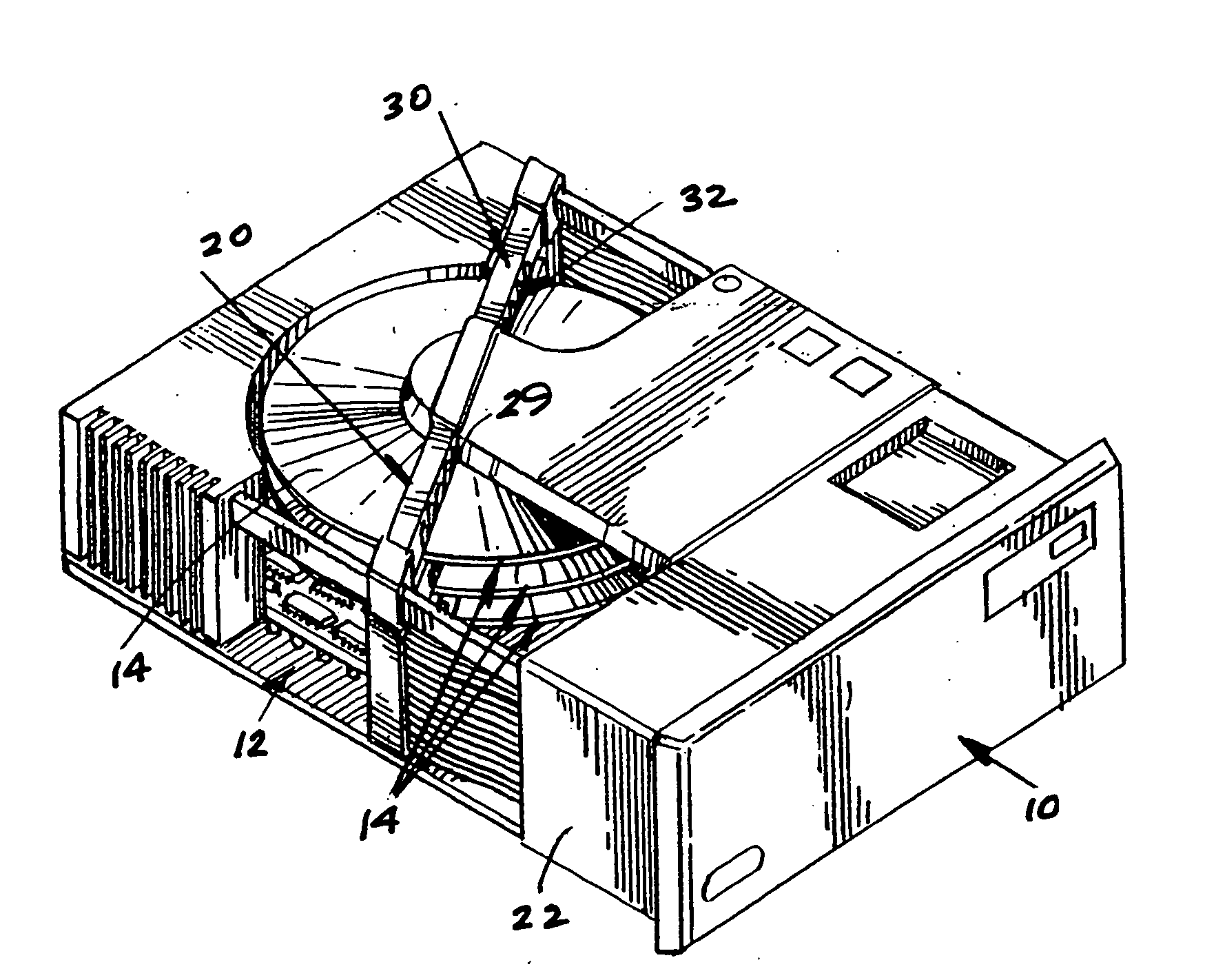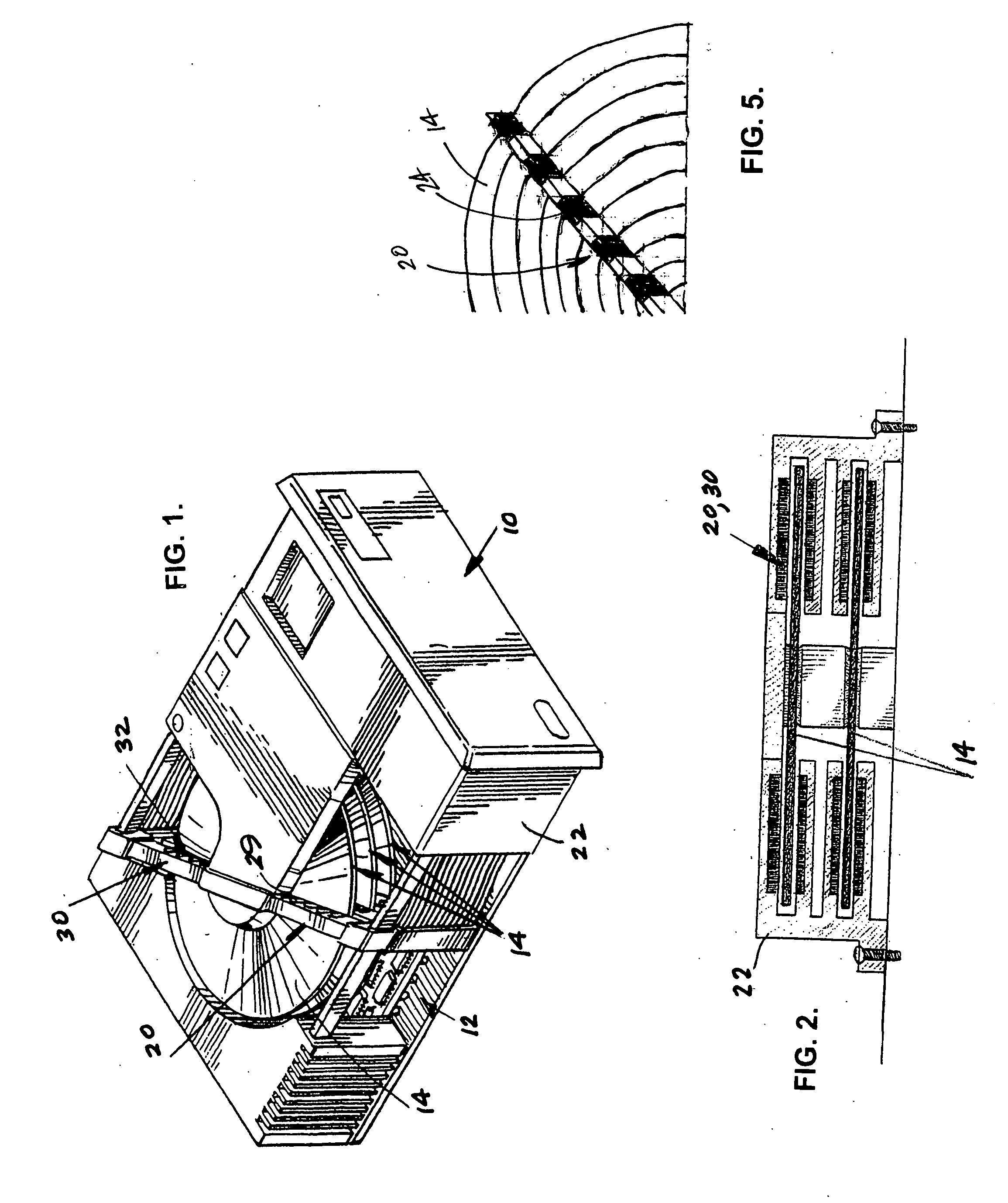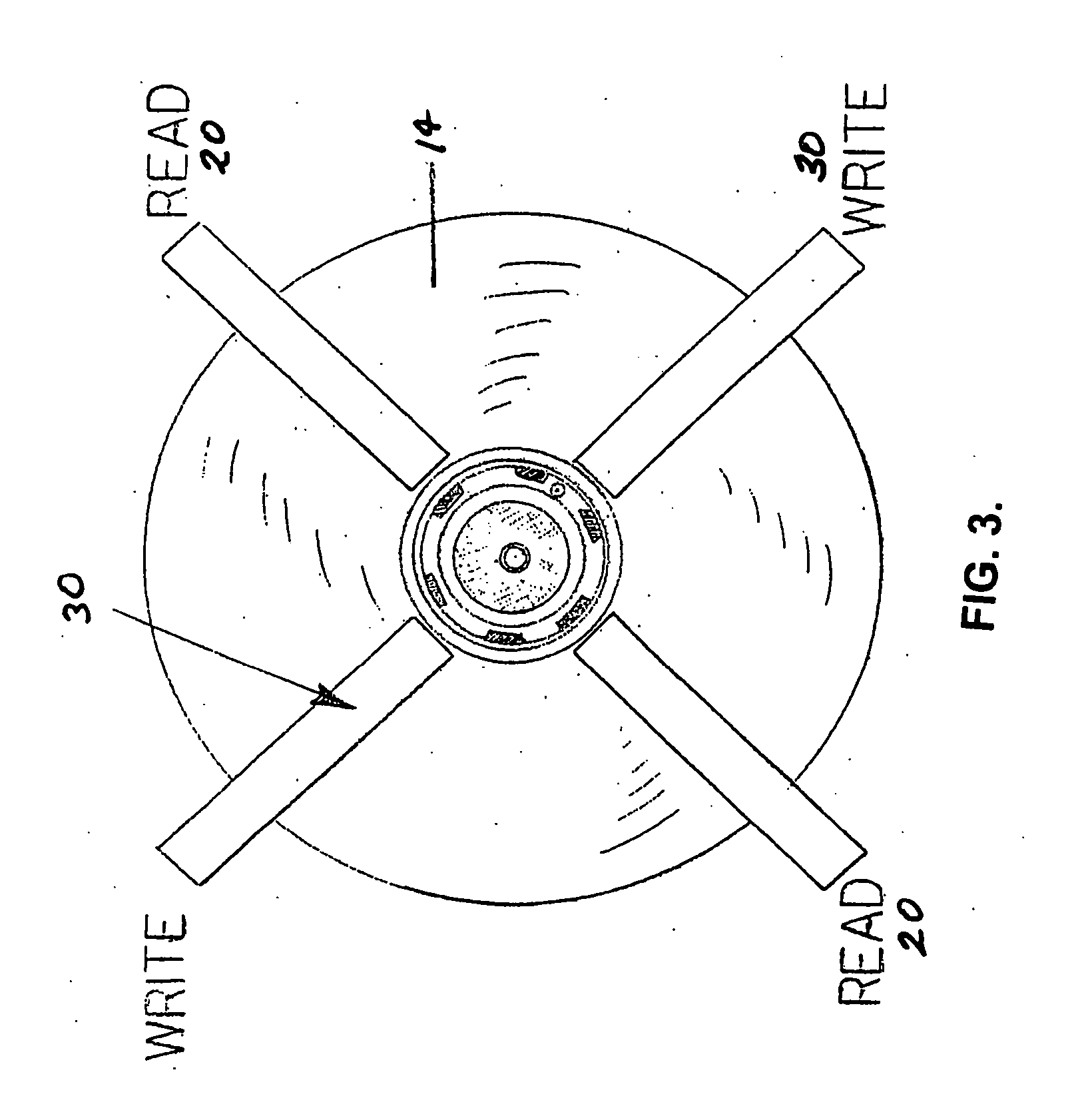Read/write system for a hard drive
a hard drive and read/write technology, applied in the field of hard drives of computers, can solve the problems of increasing susceptibility, reducing the overall dimensional consistency between the components, and requiring a large number of separate parts, and achieve the effect of rapid data movemen
- Summary
- Abstract
- Description
- Claims
- Application Information
AI Technical Summary
Benefits of technology
Problems solved by technology
Method used
Image
Examples
Embodiment Construction
[0031] Other objects, features and advantages of the invention will become apparent from a consideration of the following detailed description and the accompanying drawings.
[0032] Referring to the Figures, it can be understood that the present invention is embodied in a read / write system 10 for a hard drive 12 which achieves the above-stated objectives.
[0033] System 10 comprises a hard drive disc 14 which is rotated during use as will be understood by those skilled in the art.
[0034] System 10 further comprises a read head unit 20 which is fixed in place with respect to hard drive disc 14 whereby the hard drive disc 14 rotates with respect to the read head unit 20. The read head unit 20 can be fixedly mounted on a housing 22 or the like.
[0035] As can be understood from FIG. 5, read head unit 20 includes a plurality of data reading elements 24 located to read data from the hard drive disc 14 when necessary.
[0036] System 10 further includes a write head unit 30 which is fixed in p...
PUM
| Property | Measurement | Unit |
|---|---|---|
| magnetic | aaaaa | aaaaa |
| speed | aaaaa | aaaaa |
| rotation | aaaaa | aaaaa |
Abstract
Description
Claims
Application Information
 Login to View More
Login to View More - R&D
- Intellectual Property
- Life Sciences
- Materials
- Tech Scout
- Unparalleled Data Quality
- Higher Quality Content
- 60% Fewer Hallucinations
Browse by: Latest US Patents, China's latest patents, Technical Efficacy Thesaurus, Application Domain, Technology Topic, Popular Technical Reports.
© 2025 PatSnap. All rights reserved.Legal|Privacy policy|Modern Slavery Act Transparency Statement|Sitemap|About US| Contact US: help@patsnap.com



